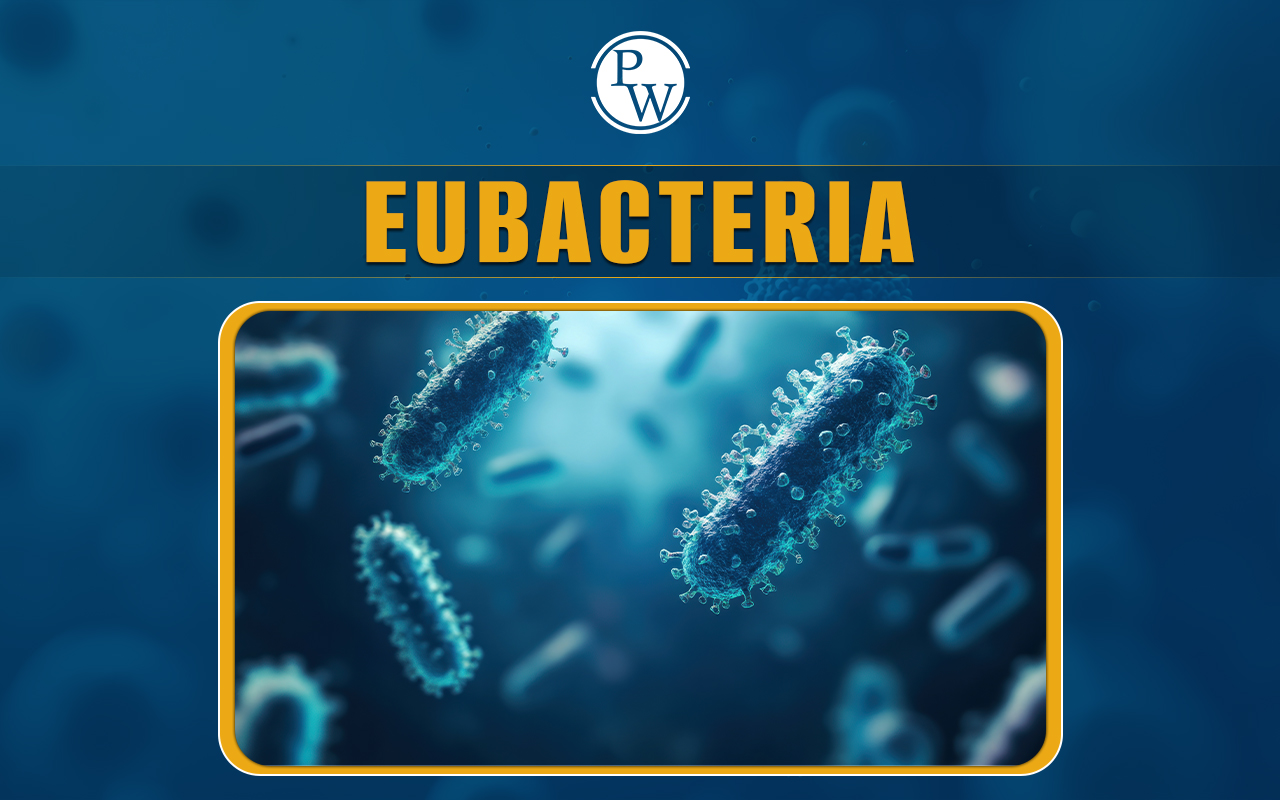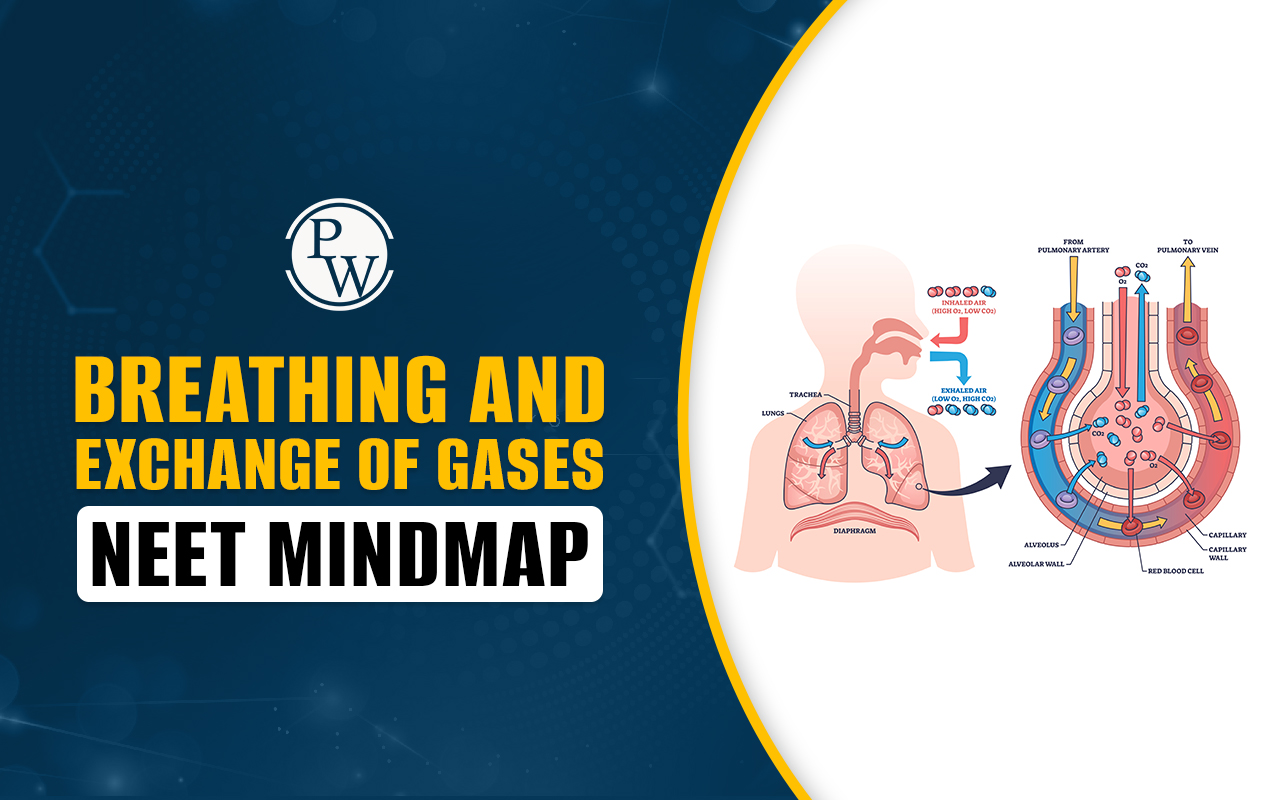

Eubacteria, commonly referred to as "true bacteria," are single-celled organisms found in almost every habitat on Earth. These microscopic organisms play a critical role in various ecosystems, functioning as primary decomposers, nitrogen fixers, and even contributors to human health. Their structural diversity and biological functions make them a crucial topic for the NEET Exam , as understanding their role helps in grasping foundational concepts in microbiology and ecology.
Definition of Eubacteria
Eubacteria are prokaryotic organisms that lack a true nucleus and membrane-bound organelles. The term “eubacteria” distinguishes them from archaebacteria, which are prokaryotes with distinct biochemical characteristics. Eubacteria possess a rigid cell wall, made primarily of peptidoglycan, that protects the cell and provides shape. They reproduce asexually through binary fission and exist in diverse environments, from soil and water to human and animal bodies.Characteristics of Eubacteria
Eubacteria exhibit several defining characteristics:- Prokaryotic Nature : Lacking a true nucleus, their genetic material is not enclosed in a membrane but instead resides in the cytoplasm in a nucleoid region.
- Cell Wall Composition: Their cell walls contain peptidoglycan, which provides structural support and maintains their shape.
- Diversity in Habitat: They are found in nearly every environment, including extreme environments like hot springs, acidic lakes, and deep-sea vents.
- Nutritional Diversity: Eubacteria can be autotrophic, using photosynthesis or chemosynthesis to produce food, or heterotrophic, relying on organic material for energy.
- Reproductive Process: Eubacteria primarily reproduce asexually through binary fission, though they can exchange genetic material in other ways.
Structure of Eubacteria
The structure of eubacteria is simple yet well-adapted to their functions. Key components include:- Cell Wall: The rigid cell wall, made up of peptidoglycan, gives the bacteria its shape and protection. This cell wall structure is distinctive to eubacteria and provides a protective barrier.
- Cell Membrane : Beneath the cell wall lies the plasma membrane, which regulates the movement of substances in and out of the cell.
- Cytoplasm : The cytoplasm houses the cellular components, including ribosomes and the nucleoid region.
- Nucleoid : Unlike eukaryotic cells, eubacteria lack a true nucleus. Instead, their genetic material is located in the nucleoid region within the cytoplasm .
- Flagella: Many eubacteria have one or more flagella, long whip-like structures that aid in movement.
- Pili : Small hair-like structures on the cell surface, called pili, help in attachment to surfaces and in genetic exchange between bacteria through a process called conjugation.
Types of Eubacteria
Eubacteria, or true bacteria, can be classified into distinct types based on their shape, metabolic processes, and environmental preferences. This classification helps us understand their functions and significance in various ecosystems. The main types include:- Cyanobacteria : Known as "blue-green algae," cyanobacteria are photosynthetic and contribute significantly to oxygen production in aquatic ecosystems, supporting various marine and freshwater organisms.
- Gram-positive Bacteria : With thick peptidoglycan cell walls, Gram-positive bacteria retain a purple color in Gram staining and include medically significant species, like Streptococcus and Staphylococcus, as well as antibiotic-producing strains.
- Gram-negative Bacteria : These bacteria have a thinner cell wall and an outer membrane, which makes them resistant to certain antibiotics. Pathogenic species include Escherichia coli and Salmonella.
- Actinobacteria: Important decomposers in soil, actinobacteria like Streptomyces produce antibiotics and play a role in breaking down organic matter.
- Proteobacteria : A diverse group that includes beneficial species like Rhizobium, which aids in nitrogen fixation, and pathogens such as Helicobacter pylori, which can cause stomach ulcers.
Classification of Bacteria based on their Shapes and Arrangement
Eubacteria can also be classified by their shape and arrangement, which aids in their identification:- Cocci: Spherical-shaped bacteria, which can form clusters (staphylococci), chains (streptococci), or pairs (diplococci).
- Bacilli: Rod-shaped bacteria, typically occurring singly but can also form chains.
- Spirilla : Spiral-shaped bacteria with rigid structures, which often have flagella for movement.
- Vibrios: Comma-shaped bacteria with a curved rod structure.
- Spirochetes : Flexible spiral bacteria, known for their corkscrew movement.
Reproduction in Eubacteria
Eubacteria primarily reproduce asexually through a process called binary fission, where a single bacterial cell divides into two identical cells. This rapid method allows for exponential population growth in favorable conditions. In addition, some eubacteria can exchange genetic material through methods like conjugation (where DNA is transferred between bacteria via pili), transformation (where bacteria absorb DNA from their environment), and transduction (where bacterial DNA is transferred by viruses). These processes allow genetic variation, which helps bacteria adapt to environmental changes.Mode of nutrition of Eubacteria
Eubacteria display diverse nutritional strategies:- Autotrophic Eubacteria: Some bacteria, like cyanobacteria, are autotrophic and can synthesize their food through photosynthesis or chemosynthesis.
- Heterotrophic Eubacteria: These bacteria rely on organic compounds as a source of energy and can be saprotrophs (decomposing dead matter) or parasitic (feeding off living hosts).
- Mixotrophic Bacteria: Some eubacteria can switch between autotrophic and heterotrophic nutrition depending on environmental conditions.
Importance of Eubacteria
Eubacteria are essential to various ecological, medical, and industrial processes:- Ecological Role : As decomposers, eubacteria help break down organic matter, recycling nutrients in ecosystems. Photosynthetic eubacteria also contribute to oxygen production and carbon fixation.
- Human Health : Many eubacteria are part of the human microbiome and aid in digestion, immune system function, and vitamin production. Some, however, can be pathogenic and cause diseases.
- Industrial Applications : Eubacteria play critical roles in industries, such as fermentation for food production, bioremediation for cleaning up environmental contaminants, and the production of antibiotics, enzymes, and biofuels.
MCQs of Eubacteria
Q1. Eubacteria are classified as;
- Prokaryotes
- Eukaryotes
- Archaea
- None of these
Q2. Which domain of life do Eubacteria belong to?
- Eukarya
- Archaea
- Bacteria
- Protista
Q3. Eubacteria are primarily characterized by their;
- nucleus
- lack of cell wall
- rigid cell wall
- multicellularity
Answers of MCQs of Eubacteria
Ans1. Prokaryotes| NEET Exam Important Links | |
|---|---|
| NEET Biology Syllabus | NEET Biology Diagrams |
| NEET Biology MCQ | NEET Biology Chapter wise Weightage |
| NEET Biology Notes | NEET Previous Year Question papers |
Eubacteria FAQs
Q. What are eubacteria commonly called?
Ans. Eubacteria are commonly called "true bacteria." This term helps distinguish them from archaebacteria, another type of prokaryote with distinct characteristics.
Q. Can eubacteria live anywhere?
Ans. Eubacteria are highly adaptable and can live in a wide range of environments, including soil, water, the human body, and extreme environments like hot springs and acidic waters. Their ability to survive in diverse conditions makes them one of the most widespread organisms on Earth.
Q. How do eubacteria reproduce?
Ans. Eubacteria primarily reproduce asexually through a process called binary fission, where a single bacterial cell divides into two identical daughter cells. Some eubacteria can also exchange genetic material through processes like conjugation, transformation, or transduction, contributing to genetic diversity.
Q. Who discovered the eubacteria?
Ans. Eubacteria were first observed by Antonie van Leeuwenhoek in the late 17th century, using one of the earliest microscopes. He described these "little animals" after examining various substances under his microscope, laying the foundation for microbiology.
Q. Are eubacteria multicellular or unicellular?
Ans. Eubacteria are generally unicellular organisms, meaning each bacterium is a single, independent cell capable of performing all necessary life functions.
Q. Do eubacteria have cell walls?
Ans. Eubacteria have cell walls made of peptidoglycan, a unique compound that provides structural support and protection. This cell wall is one of the defining features of eubacteria and helps in distinguishing them from other types of cells, like animal and plant cells.
🔥 Trending Blogs
Talk to a counsellorHave doubts? Our support team will be happy to assist you!

Check out these Related Articles
Free Learning Resources
PW Books
Notes (Class 10-12)
PW Study Materials
Notes (Class 6-9)
Ncert Solutions
Govt Exams
Class 6th to 12th Online Courses
Govt Job Exams Courses
UPSC Coaching
Defence Exam Coaching
Gate Exam Coaching
Other Exams
Know about Physics Wallah
Physics Wallah is an Indian edtech platform that provides accessible & comprehensive learning experiences to students from Class 6th to postgraduate level. We also provide extensive NCERT solutions, sample paper, NEET, JEE Mains, BITSAT previous year papers & more such resources to students. Physics Wallah also caters to over 3.5 million registered students and over 78 lakh+ Youtube subscribers with 4.8 rating on its app.
We Stand Out because
We provide students with intensive courses with India’s qualified & experienced faculties & mentors. PW strives to make the learning experience comprehensive and accessible for students of all sections of society. We believe in empowering every single student who couldn't dream of a good career in engineering and medical field earlier.
Our Key Focus Areas
Physics Wallah's main focus is to make the learning experience as economical as possible for all students. With our affordable courses like Lakshya, Udaan and Arjuna and many others, we have been able to provide a platform for lakhs of aspirants. From providing Chemistry, Maths, Physics formula to giving e-books of eminent authors like RD Sharma, RS Aggarwal and Lakhmir Singh, PW focuses on every single student's need for preparation.
What Makes Us Different
Physics Wallah strives to develop a comprehensive pedagogical structure for students, where they get a state-of-the-art learning experience with study material and resources. Apart from catering students preparing for JEE Mains and NEET, PW also provides study material for each state board like Uttar Pradesh, Bihar, and others
Copyright © 2025 Physicswallah Limited All rights reserved.
Get App











